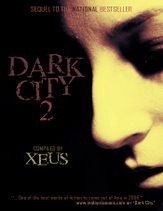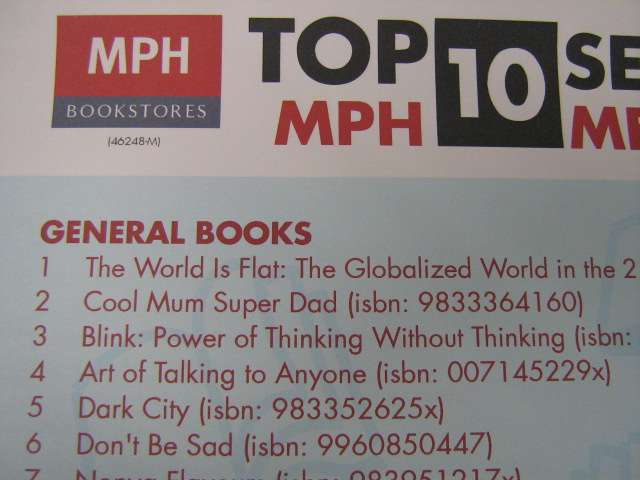The first Malaysian lit bloggers club (and other stuff)

I came to the first Malaysian lit bloggers' club (check out the wonderful poster design from Kenny Mah) to meet Yang May Ooi and other friends. I arrived late because I'd been stuck in the bank earlier, but just in time to hear Yang May Ooi wrap up with some words of wisdom. After that, Sharanya came on. I don't know much about poetry, but she sure writes beautiful and emotionally impactful prose.
After that, it was all networking and gleaning words of wisdom. Things I have learnt:
1. The UK publishing market - ah yes, they love Asian fiction. But they tend to pigeon-hole you. They want the exotic east. They want chinoiserie. They want the requisite English or semi-English guy caught in the middle of a war in a distant country. Write that well (see the 'Gift of Rain' by Tan Twan Eng) and you stand a good chance of being published in the UK.
2. Yang May Ooi's book 'The Flame Tree' has sold 10,000 copies worldwide to date. After H and D stopped reprinting it, she sought permission to publish it under her own imprint. She says "You can't make a living from writing, even if you're published in the UK." So she's gone back partially to do law.
This brings to mind John Grisham's first book, 'A Time to Kill', which only sold 5000 copies at first run. And Dan Brown's 'Digital Fortress,' which only had 10,000 copies in print at first go. And then 'The Firm' and 'Da Vinci Code' exploded. 'Digital Fortress' subsequently sold 10 million copies.
So hang in there, Yang May Ooi. It didn't happen for Dan until the 4th book!
You know what happens when a bunch of writers and editors get together? They talk shop and - wham! - ideas happen!
I was telling Sharon that after receiving 40 over entries for Dark City 2, when I gave feedback to the young, would-be writers on how to improve their stories, many of them were surprised. "No one ever told me!" "Oh, I didn't know I was doing this." "I didn't know we were not supposed to do this."
Sharon was very concerned over the quality of local writing. "We're not at that level yet," she says. When you pick up a UK book, you know it's gone through fire. It was picked against all that slush, and so it HAS to be good. When you pick up a Malaysian book, you're not sure if it's gone through that fire.
So the two ideas melded but the objective remains the same: TO RAISE MALAYSIAN WRITERS TO THE NEXT LEVEL, AND THEN THE NEXT.
What do we do about it?
ANSWER: We have a critic's/beta-reading circle. Aspiring writers can send their work to this circle, be critiqued and then set (hopefully) onto the right direction.
There are still so many common mistakes I find that writers make when they send their work in (having turned editor myself):
1. They send something that is not grammatically perfect
2. They fail to outline their plot, so it's all over the place
3. They fail to start at the most exciting part. (Only in Chapter 2 should the Back Story of how the character got there come in).
4. Their opening sentence fails to grip the reader.
5. They tell too much, not show. (Even the most experienced of writers are guilty of this, meaning we always need a fresh pair of eyes to look at our work.)
6. They meander, writing passages that have nothing to do with the story. They put in too many words and sentences, not realising that 'more is less.' And that you should tell the story in as few words and sentences as possible.
7. They pack overly complex sentences, thinking that as a writer, they are compelled to do this. (one sentence, Eric says, lasted an entire page!) They fail to understand that unless you ahve reached the level of a Faulkner or Fitzgerald, simple sentences work best.
8. They write out of their dept. They want to write about things they don't know that much about. The answer is research. For example, when you want to write about the Vatican, you'd best make sure you've either a) visited it, or b) researched it thoroughly in books.
9. They have characters throw tantrums and scream at each other all the time, not realising this is a no-no in fiction writing.
10. They are very cliched in their similes, comparisons or even building characters. A wife should not always be nagging. A boss should not always be snappy. A villain should not always laugh maniacally at the end of each threat.
There are many, many more.
And so, would you be interested in such a circle/cum writing class? There is one on the net, but it requires you to publish your work online. (Which might not be so acceptable to some publishing houses.) Because the only way to improve is to be critiqued. And be critiqued by someone who understands YOUR genre, who'd stack you against the best of the best. (And this can only happen in a CIRCLE, not with a single editor.)




